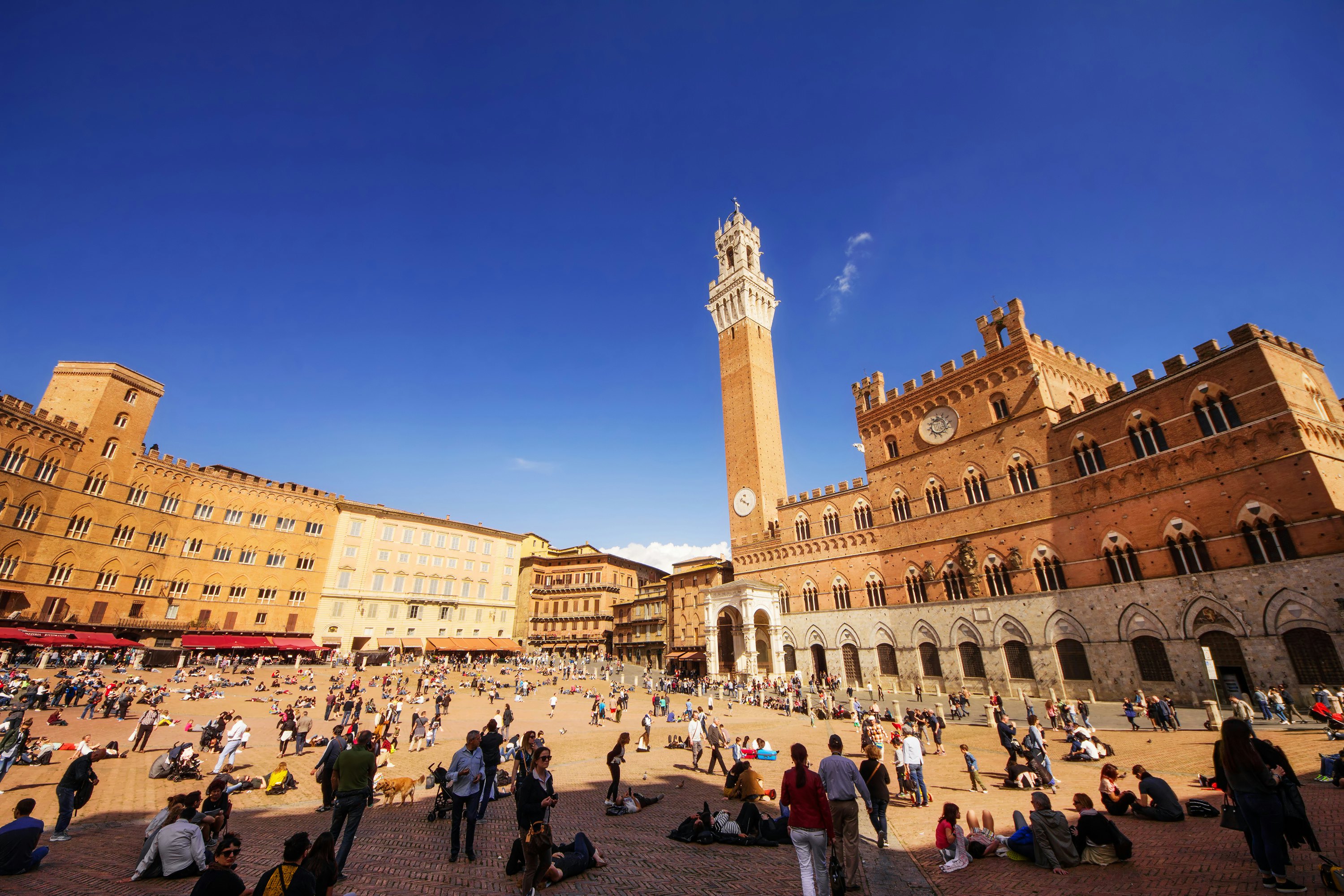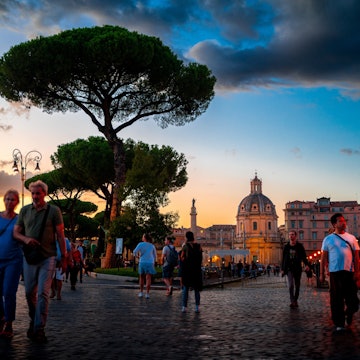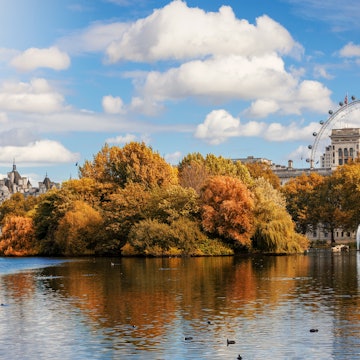

From hiking on Elba to dining in Florence, here are the best things to do in Tuscany. Alex Catardi/Shutterstock
When conjuring a mental image of travel in Tuscany, most people think of grassy hills, endless sunflower fields and geometrical rows of vineyards. A quick online search will fetch similar results. After all, that dreamy countryside is a large part of the region and the global appeal of Tuscan attractions – this is a place where one can be immersed in nature and relax, perhaps while sipping on a floral-scented glass of red wine. However, as accurate as that portrayal may be, there's more to Tuscany than its beautiful countryside. Visit enchanting medieval hamlets (borghi), have unique gastronomic experiences, get to know ancient local customs and tour cities bursting at the seams with art and culture, many of which escape international fame.
So, go beyond the mainstream destinations and escape the ever-growing problem of overtourism with this guide to the top experiences to have on your next Tuscany itinerary.

1. Swim and hike on the island of Elba
The island of Elba, the biggest in the Tuscan Archipelago, is big enough to contain two souls: one equipped with countless hospitality services, the other where wild nature still reigns supreme. During your time on Elba, you can enjoy a splendid seaside vacation, snorkeling in aquamarine waters and eating fresh seafood on the beach as you enjoy outdoor activities in Tuscany. Plus, embark on adventures in nature and trek to the highest peaks of the island. Elba is reachable year-round with ferries from Piombino.
Planning tip: If you are looking to unwind and unplug, rent an apartment in a remote hamlet on the island, such as Poggio, or a seafront view room at Hotel Antares on the beach of Capoliveri.

2. Admire famous artworks in Florence
If you have never been, Florence is a must; an open-air museum, with its stunning Renaissance architecture of churches, bridges, palazzi (mansions), and public statues. Immerse yourself in the triumph of art that is the Galleria degli Uffizi, where you can see Botticelli’s masterpiece the Birth of Venus, among hundreds of other artworks. Michelangelo’s David awaits you at the Galleria dell’Accademia. You also can’t miss Florence’s Duomo, Cattedrale di Santa Maria del Fiore, with its enormous dome designed by Brunelleschi, along with the adjacent Baptistery. That’s not even scratching the surface of what Florence has to offer.
Planning tip: Florence deserves to be visited during low season, so you can avoid waiting in line at every turn. You couldn’t see it all in a day, so plan to stay at least a weekend to take your time through the main sites.

3. Go horseback-riding in the Parco Regionale della Maremma
Connect with the land through the animals that inhabit it, like the Tuscans of old. There is an ancient tradition of wild camaraderie between horses and humans in the plains of the Parco Regionale della Maremma. For millennia, horseback-riding shepherds called butteri maremmani would herd their ox here; in 1890, Buffalo Bill brought his circus to Italy and his legendary cowboys lost a horse-taming competition to the local butteri. Modern butteri put on elaborate performances to show their prowess on horseback, and they also organize riding lessons and excursions that you can book through Parco della Maremma or Corte degli Ulivi.
Detour: Visit the colorful sculpture garden, il Giardino dei Tarocchi (Park of the Tarots), between April 1 and October 15. Otherwise, you could visit the nearby city of Grosseto, or head to the lagoon and beaches of Orbetello.
4. See Pisa beyond the Leaning Tower
Climbing the Leaning Tower of Pisa is a worthy experience. Locals will even forgive the cringey but viral photos of visitors pretending to hold up the tower, if only tourists visited something other than the tower itself. With it, admire Piazza dei Miracoli and enter the splendid Duomo, Cattedrale di Santa Maria Assunta, and its Battistero, the biggest in Italy. The quartet is completed by an unusual but worthy addition, the monumental cemetery, Camposanto. Beyond the buzz of miracle square, Pisa has a lot to offer. Enjoy the lively scene on the Lungarno, where the many university students and locals meet for an aperitivo (a pre-dinner drink) in front of medieval and renaissance-style palazzos; don’t miss the small but impressive Chiesa di Santa Maria della Spina and Piazza dei Cavalieri.
Detour: Head to the nearby coastal city of Livorno for a complete change of scenery in one of Italy’s “youngest” cities: this one was “only” founded in the 16th century.

5. Cycle through Val d’Orcia
What better way to experience slow – and low-impact – travel than to ride a bike? The splendid UNESCO-listed Val d'Orcia south of Siena is a highlight of a visit to Tuscany. Touring it provides dream-like landscapes as nature and ancient architecture fold seamlessly into each other. Make the experience more authentic (and mindful!) by cycling, instead of driving, through the valley to admire the hills, the vineyards and the hamlets at a closer distance. Take your time to enjoy it fully and stop whenever you want. Most hotels and agriturismi (farm-stay accommodations) in the area have bikes that you can rent as part of your stay, and there are other organizations offering bike rental services like Val d’Orcia E-Bike. When renting, ask the locals for recommendations on the best paths to follow based on your experience, interests and the time you have available.
Detour: If the season allows, dip into the sulfurous white waters of the natural thermal baths at Bagni San Filippo (near the village of Bagno Vignoni) or Bagni di Petriolo (near Monticiano). They are completely free to visit, but lack any infrastructure in their immediate surroundings. Both spa towns are off the tourist trail.
6. Taste the wines of Tuscany
Anyone who drinks wine knows of Tuscany’s many excellent qualities of DOC and DOCG wines, which are enhanced when consumed in their original habitat and paired with the local cuisine. If you enjoy wine, plan to stop by a cantina (winery or wine cellar) for a well-rounded experience taking you from the vineyards to the barrel to the lunch table. Hundreds of winery houses offer hospitality services and activities centered around wine tasting. The zero-emission Carpineto farm producing varieties of wine all over Tuscany (Chianti, Montepulciano, Montalcino, etc.) also organizes other experiences that are not solely focused on wine (like lakeside picnics and truffle hunts, season permitting), which is a good option if you have non-drinking traveling companions.
Planning tip: If wine-related activities are up your alley, consider planning your trip between September and October for the vendemmia, grape harvest, to participate even more actively and learn more about the wine-making tradition and process.

7. Climb 400 steps to see Siena from above
The 87m-tall (285ft) Torre del Mangia looms over Siena’s iconic Piazza del Campo. Those who can and dare to climb its 400 steps are rewarded with scenes of the entire city from this high viewpoint. (Given its narrow size and ancient origins – it was built in 1348! – the tower is not accessible to wheelchair users.) Another incredible viewpoint is the Facciatone, the still-standing unfinished structure by the Duomo, the legacy of an abandoned project to extend the cathedral. You can climb the wall and face the Duomo in a way that you couldn’t from anywhere else. Obviously, enter the cathedral itself and marvel at the beauty that is its mosaic pavement if you are in luck to find it uncovered. Throughout the year, the pavement is covered to protect the mosaics from trampling feet, but it's open to the public during the month of July or after August 18.
Detour: Drive southwest of Siena to the Abbazia di San Galgano, a ruined abbey that is like something out of a Gothic novel. The nearby hermitage also houses a legendary sword in the stone planted there by the saint in 1180.
8. Enjoy staples of Tuscan cuisine
It’s nearly impossible to have a bad meal in Tuscany. From the T-bone steak called fiorentina to the variety of ways to cure and cook wild boar, there is no shortage of meat-based dishes. The more daring may find it in them to try the local offal recipes like juicy trippa or lampredotto, which are very much part of the experience. Vegetarians can enjoy local cheeses like intense Pecorino di Pienza and pungent pasta such as pici all’aglione and creamy cacio e pepe. Vegans may not see many options for them on the menu, but a plate of fresh local vegetables can usually be arranged and is great to the taste; if in season, ask for porcini mushrooms.
Local tip: Unless it’s necessary, such as in the case of allergies or dietary restrictions, avoid asking for things that are not on the menu or for preference-based variations. Trying the food as it's served will give you a more authentic Tuscany food experiences.

9. Follow the Via Francigena
Back in the Middle Ages, it would take about 80 days for pilgrims to make the trip from Canterbury, England to Rome through Via Francigena. The Tuscan leg of the long, winding road is perfectly preserved to this day and still trod by tourists; the goal may no longer be to reach Rome, but simply to walk the beautiful white roads connecting one Tuscan town to the next, taking in all the sounds, smells, and colors coming from the fields. The epitome of slow and sustainable tourism, this transformative experience is one you can take at your own pace and terms. Visit Tuscany can help you pick which parts of Via Francigena to cover and suggests various itineraries of about 30km (19 miles) per day. The best months to undertake this journey are April to May and September to October when temperatures are pleasant and the roads are less crowded.
Detour: You can walk to the Renaissance town of Pienza, which was made to be “the ideal city” by Pope Pius II in 1462.
10. Visit the medieval towns of Lucca and Pistoia
Choose to stay in one of the less-traveled-to cities instead of the most famous ones – it will make for a more relaxing vacation, where you will experience a more genuine experience, with no tourist traps – and you will have something different to tell your friends back home. At first glance, the neighboring cities of Lucca and Pistoia in the north of the region may appear very similar in style, and they certainly share some common characteristics due to the medieval architecture still present in their centers. Explore their cathedrals and battisteri that alone would warrant the trip, and then some more. The smells and sounds of these towns will give you a more authentic view of what Tuscany is like for locals today, none of the polished, tourist-facing look that Florence or Siena offer.
Planning tip: If you cannot stay there or allocate more time, both cities can be visited in a day.
















